This is not a post about cooking. This is a post about crowdfunding and how it is changing how many products are coming to the market. I touched on this briefly in my post on forthcoming keyboard designs, but Sous Vide as a category gives a clearer view of what is going on in crowdfunding of new hardware.
Let’s get the cooking stuff out of the way. Sous Vide (French for ‘under vacuum‘) is an interesting intersection of technology and cooking. The basic concept is to create a water bath where the water is circulated and heated to a very precise temperature (to a tenth of a degree). Food items are vaccum-sealed in plastic bags and inserted into the water bath. Using lower than normal cooking temperatures, the foods are cooked through and can be accurately cooked to very specific degrees for different types of foods.
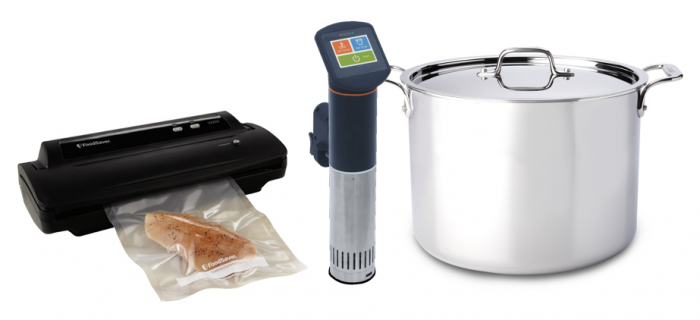
In use since the 1970s in restaurants where the equipment costs thousands of dollars, the first widely available ‘consumer’ unit, the Sous Vide Supreme, came out in late 2009 and cost about $400. In the years since then a number of companies have come out with competing devices, both of the self-contained variety like the SousVide Supreme (called water baths), and the more common immersible device (called circulators), that are inserted into a pot or other container and heats and circulates the water within that container. One downside of Sous Vide is that any cooking effect that requires higher heat or exposure to air, such as the browning of meats, doesn’t occur. Another downside is the length of time required to cook the food, although one might compare it to slow cookers.
Sous Vide is interesting as a new cooking technology. One doesn’t see too many completely new cooking techniques introduced into the consumer kitchen. We bake, boil, braise, fry and roast. Most cooking fits into these general techniques. One might argue that pressure cooking is a different technique – although it has been commercially available for about 150 years.
More interesting to me, however, is how Sous Vide as a product category has grown in the past few years, and how crowdfunding has been largely responsible for that growth. Developing new hardware products, whether computer accessories or cooking devices, is a very difficult undertaking. One of the main reasons developing new hardware is difficult is that startup costs – the costs of getting the initial devices designed and manufactured in a factory – are very high. In the past, it was very difficult to get people to pre-pay for hardware from unknown companies. Inventors of new hardware devices instead either had to raise a lot of money, difficult in all cases, but even more so when your product is new and the market is unconfirmed, or sell their idea to a larger company who had the means to manufacture their product. Crowdfunding has allowed many hardware products to come into existence that otherwise would never have made it to market. Sous Vide cooking equipment is just one category of hardware that has been propelled by the availability of crowdfunding platforms like Kickstarter and Indiegogo, but I think it’s an illustrative one.
Nomiku
The first crowdfunded Sous Vide device, Nomiku, was brought out on Kickstarter. It’s campaign successfully raised $586,061 (based on a $200,000 goal) with 1,880 backers on July 18, 2012. This was at the time the most successful food device crowdfunding campaign.
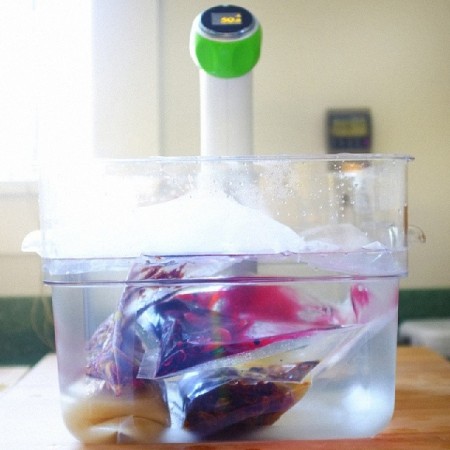
Codlo & Sansaire
Perhaps based on this very successful campaign, two fairly similar devices were crowd funded the following year, Codlo and Sansaire. Codlo was mildly successful, raising £128,961 (based on a £100,000 goal) with 1,139 backers in July 2013.
Sansaire did significantly better raising $823,003 (based on a $100,000 goal) with 4,084 backers in September 2013.
AquaChef Clarity & SOUSIMPLE
Two more Sous Vide devices were pitched via crowdfunding, but failed – the AquaChef Clarity and the SOUSIMPLE. The AquaChef Clarity raised less than a third of its $100,000 goal before it was cancelled in November 2013. It was a full water bath device, and while I can’t say why it failed, it could just have been bad timing coming so soon after the successful campaigns of the Codlo and the Sansaire. It could also be that the full water bath Sous Vide devices are less popular due to the amount of space they take up.
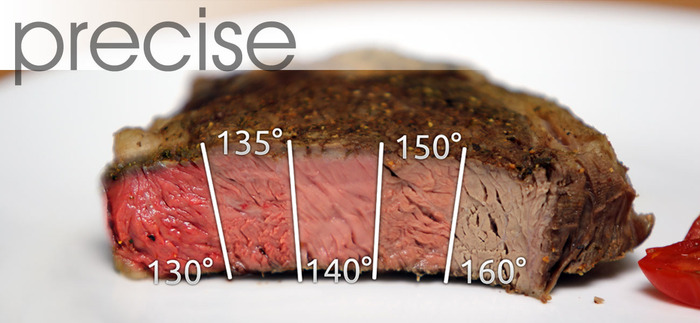
The SOUSIMPLE allowed you to adapt an existing device such as a rice cooker or a slow cooker, to do Sous Vide cooking. It was put out on Kickstarter in January 2014 but was suspended when it became clear that it would not reach its goal of $25,000. Part of the reason might be that it was revealed in the comments for the project that the whole device was essentially the repackaging of a $17 digital temperature controller with a wooden frame and cables for $85. More than just being marked up (which frankly I think is fair if they make the product more useful and easier to buy), the revelation was that the product was not innovative. People who buy from crowdfunding sites are buying innovation.
Anova & Mellow
Currently there are two interesting campaigns going on, Anova and Mellow. Anova is finishing up a campaign on Kickstarter, where it has currently raised $1,712,328 from more than 10,000 backers. The campaign ends on Tuesday. The Anova is actually a second-generation device, an upgrade from the first-gen device which came out around the same time as the Sansaire last year. The upgraded Anova is less expensive, adds control through a smartphone app, and some other convenience features.
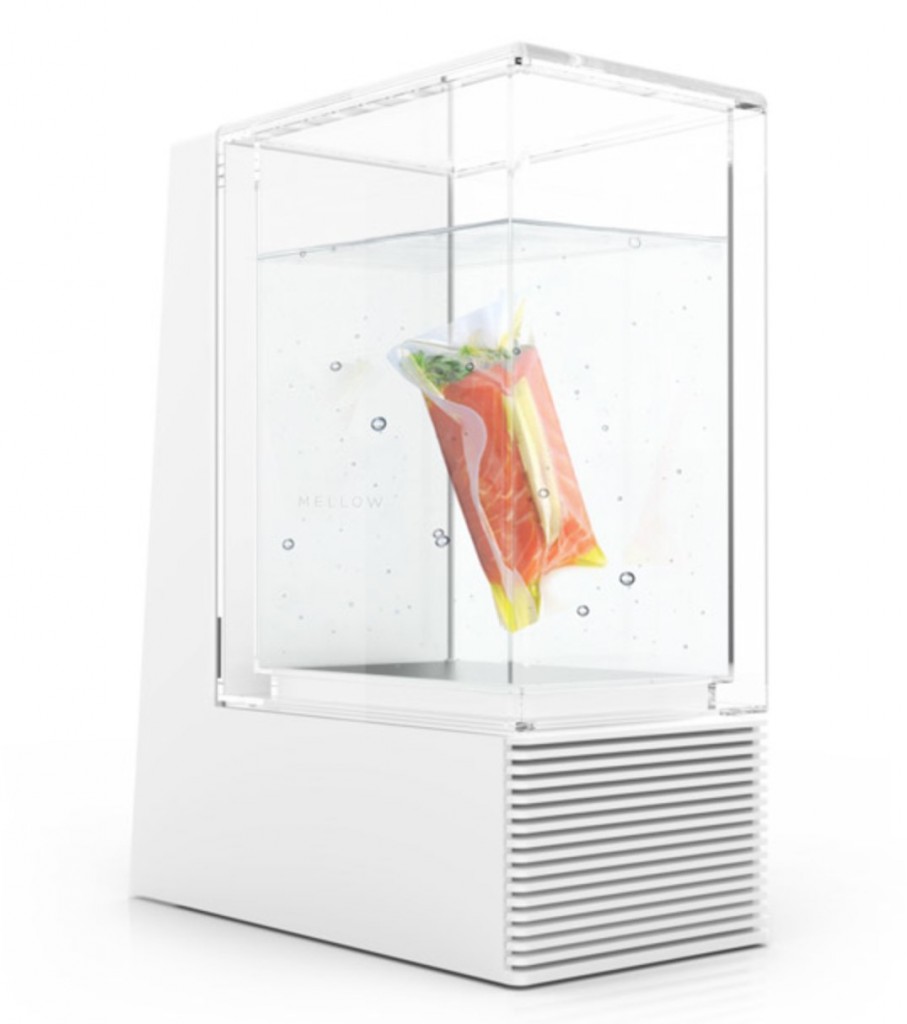
Mellow is not using a traditional crowdfunding service, but rather is allowing pre-ordering through its own website. This means Mellow doesn’t get any money until the product is ready to ship (different than most crowdfunding) but it is similar in that the company can gauge interest in their product well in advance of committing to manufacturing (similar to crowdfunding). The Mellow is not an immersible device like these other Sous Vide devices, but is a full water bath. The innovative feature that Mellow brings to the table is that it can not only heat the water in the bath, but can cool it too. That means you can put a steak a cold bath in the morning, and have it heat up in the evening to cook so its ready for dinner when you get home. Another interesting advantage of the cooling ability is that you can bring down the temperature of the food after cooking. Like the second-gen Anova, Mellow can be controlled via a smartphone app, and in fact must be controlled via an app as it has not screen or other way to control the device.
As an aside, Mellow is not the first cooking device to attempt both cooling and heating. An earlier crowdfunding campaign, the CoolCooker, attempted to do something very similar in the context of a slow cooker. It even offered a version that supported Sous Vide cooking. The campaign failed to raise the $25,000 it sought, and was suspended in January 2014.
Crowdfunding hardware is not easy
So what do all of these Sous Vide crowdfunding campaign teach us? A few things:
- New innovative devices, even if just good refinements of existing products, can find traction through crowdfunding sites
- When one product creates a new product category through a successful crowdfunding campaign, more products will follow in the category.
- Just because a category is hot, doesn’t mean every product thrown out there will be successful. Taking advantage of a popular category won’t work, as those buying through crowdfunding sites are sophisticated enough to see who is innovating and who the posers are…
- Companies can use crowdfunding to significantly reduce the risk involved in launching a new product, and small companies who could never afford to ramp up factory production of their products can use crowdfunding to make it possible.
- Crowdfunding is not just for initial products, but can be used for multiple products from the same company.
- Crowdfunding doesn’t need to be done through the big companies like Kickstarter and Indiegogo, but can be done on one’s own site. This is more useful when you have a good way to direct traffic to one’s site.
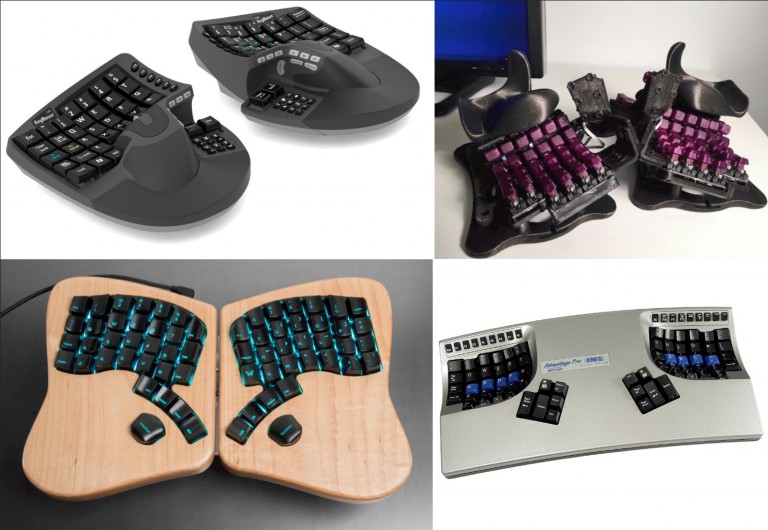
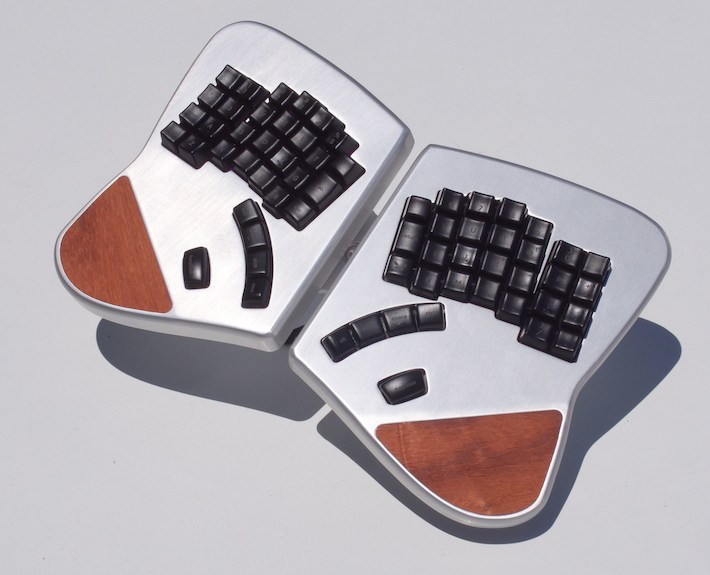
Pingback: The rise of hardware startups – thank you crowdfunding | off on a tangent